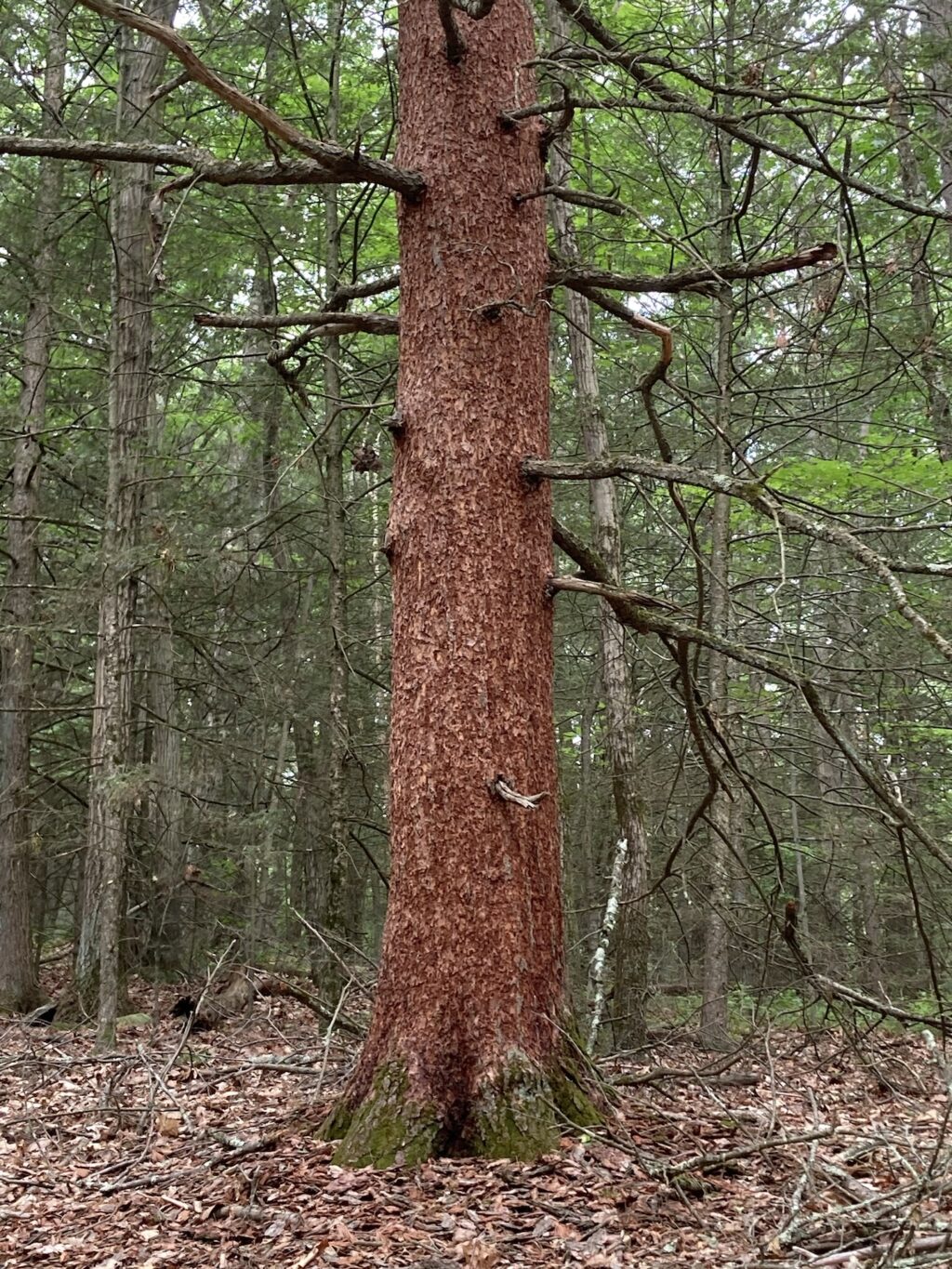Almanac: Hemlock Double-Whammy

The outer bark of this hemlock lies in a pile at the dead tree’s base. Photo: Stephen Braun
On a hike a couple of weeks ago I came across an odd sight: a large hemlock with the entirety of its outer bark seemingly stripped and lying in a heap at the base of the tree. I’ve seen tree bark removed in places by porcupines, or beavers, or bears, but the scale and uniformity of this de-barking was like nothing I’d ever seen.

I sent photos of my arboreal mystery to Kristina Stinson, Associate Professor of Plant Ecology and Conservation at UMass. She promptly identified the culprit: hemlock borer beetles. These flat, dark insects with little yellow dots on their wing covers lay eggs under the tree bark and the larvae burrow into the sapwood during their development. When the larvae transform into beetles they chew their way out, leaving tell-tale holes in the bark.

The beetle larvae and the tunnel-like “galleries” they dig loosen the tree bark, making it more likely to fall off from wind and rain. But the bark is also dislodged by woodpeckers, for whom a heavily infested hemlock is manna from heaven. It’s also true that the borers prefer to lay their eggs in trees that are already dying or dead, so the bark is often already compromised.
If hemlock borers were the only thing afflicting hemlocks, they would probably be fine, except for isolated instances of heavy infestation. Unfortunately, our native hemlocks have been under fierce attack for decades by a foreign invader: the hemlock woolly adelgid. These small insects resemble the cottony masses of mealybugs, which are common houseplant pests. The adelgids suck the juices from the underside of hemlock needles, killing them and, eventually, killing the entire tree.
The range of the adelgids has been expanding because of the warming climate from the foothold they established in the early 20th century, when they arrived on plants shipped from southern Japan. Several attempts have been made to use natural predators of the adelgids, such as black beetles or silver flies, but the scale of the invasion is so vast that these measures have done little to stem the tide.
One trait of hemlocks that decreases the general resilience of the species is their very slow growth rate. As shade-loving and shade-tolerant trees, hemlocks can take a half-century to grow only a half inch in diameter because they simply cannot extract much energy from the available sunlight in the shaded areas they prefer. Sometimes the growth rings of a hemlock can be so narrow you need a magnifying glass or dissecting microscope to count them. In contrast a white pine, oak, or tulip tree growing in full sun can add up to a quarter of an inch of diameter in a single year.
Hemlocks in our area are likely to hang on for years to come, although their long-term prospects look bleak. That means you can still find many places, often on the north sides of mountains or in deep ravines or valleys, where hemlocks cast their deep, cooling shade and exude their delightful resinous aroma. There’s no place better to sit, on a hot sultry day, than in a hemlock grove (assuming the bugs leave you alone of course) near a brook or stream. Enjoy the hemlocks’ gifts while you can!
Almanac is a regular Indy column of observations, musings, and occasional harangues related to the woods, waters, mountains, and skies of the Pioneer Valley. Please feel free to comment on posts and add your own experiences or observations.
